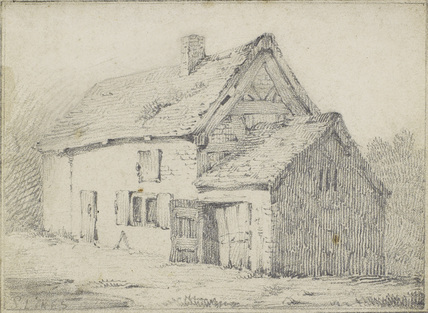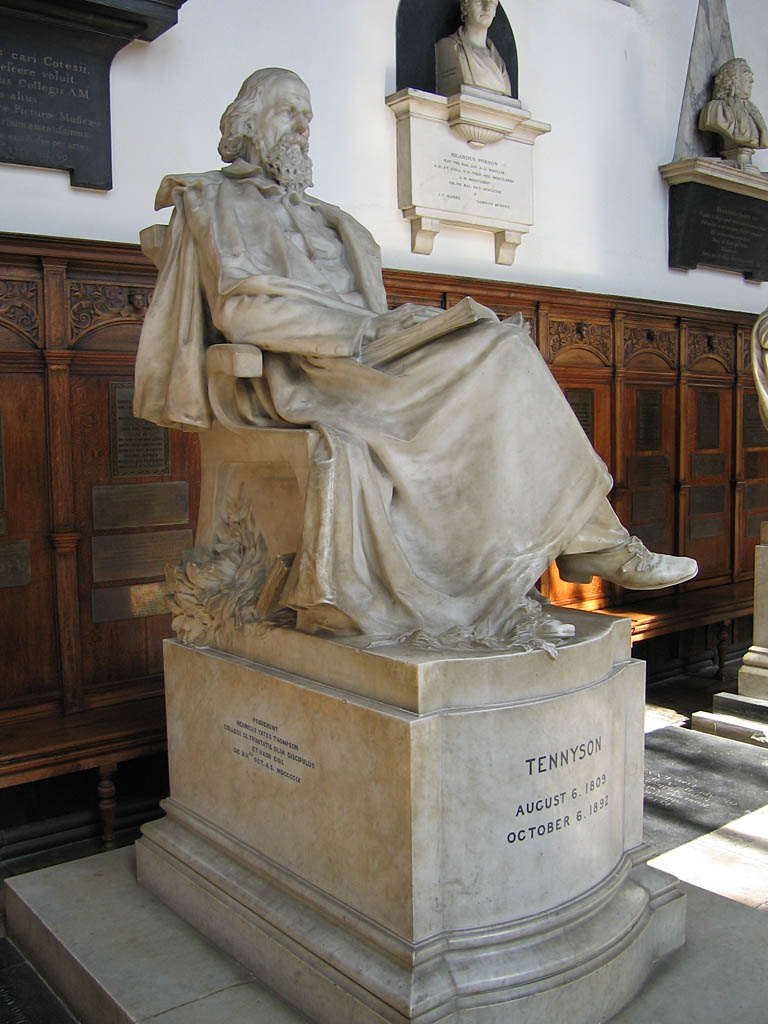|
Sir Frank Short
Sir Francis Job Short PPRE (19 June 1857 – 22 April 1945) was a British printmaker and teacher of printmaking. He revived the practices of mezzotint and pure aquatint, while expanding the expressive power of line in drypoint, etching and engraving. Short also wrote about printmaking to educate a wider public and was President of the Royal Society of Painter Etcher & Engavers (now styled the Royal Society of Painter-Printmakers) from 1910 to 1938. He was a member of the Art Workers' Guild and was elected Master in 1901. Biography Francis (Frank) Job Short was born on 19 June 1857, in Wollaston, a suburb of Stourbridge, Worcestershire. He was first educated to be a civil engineer. Short was engaged on various works in the Midlands until 1881, when he came to London as assistant to Baldwin Latham in connection with the Parliamentary Inquiry into the pollution of the river Thames. In 1883 he was elected an associate member of the Institution of Civil Engineers. Having stu ... [...More Info...] [...Related Items...] OR: [Wikipedia] [Google] [Baidu] |
Frank Short In 1914
Frank, FRANK, or Franks may refer to: People * Frank (given name) * Frank (surname) * Franks (surname) * Franks, a Germanic people in late Roman times * Franks, a term in the Muslim world for Franks#Crusaders and other Western Europeans as "Franks", all western Europeans, particularly during the Crusades Currency * Liechtenstein franc or frank, the currency of Liechtenstein since 1920 * Swiss franc or frank, the currency of Switzerland since 1850 * Westphalian frank, currency of the Kingdom of Westphalia between 1808 and 1813 * The currencies of the German-speaking cantons of Switzerland (1803–1814): ** Appenzell frank ** Aargau frank ** Basel frank ** Berne frank ** Fribourg frank ** Glarus frank ** Graubünden frank ** Luzern frank ** Schaffhausen frank ** Schwyz frank ** Solothurn frank ** St. Gallen frank ** Thurgau frank ** Unterwalden frank ** Uri frank ** Zürich frank Places * Frank, Alberta, Canada, an urban community, formerly a village * Franks, Illinois, United Sta ... [...More Info...] [...Related Items...] OR: [Wikipedia] [Google] [Baidu] |
South Kensington School Of Art
The Royal College of Art (RCA) is a public research university in London, United Kingdom, with campuses in South Kensington, Battersea and White City. It is the only entirely postgraduate art and design university in the United Kingdom. It offers postgraduate degrees in art and design to students from over 60 countries. History The RCA was founded in Somerset House in 1837 as the Government School of Design or Metropolitan School of Design. Richard Burchett became head of the school in 1852. In 1853 it was expanded and moved to Marlborough House, and then, in 1853 or 1857, to South Kensington, on the same site as the South Kensington Museum. It was renamed the Normal Training School of Art in 1857 and the National Art Training School in 1863. During the later 19th century it was primarily a teacher training college; pupils during this period included George Clausen, Christopher Dresser, Luke Fildes, Kate Greenaway and Gertrude Jekyll. In September 1896 the school received ... [...More Info...] [...Related Items...] OR: [Wikipedia] [Google] [Baidu] |
56 Brook Green
56 Brook Green is a listed building, Grade II listed building at 56 Brook Green, Hammersmith, London, W6 7BJ. The house dates from the mid-19th century. It was lived in by the printmaker and artist Frank Short. References Grade II listed houses in London Grade II listed buildings in the London Borough of Hammersmith and Fulham Houses in the London Borough of Hammersmith and Fulham Houses completed in the 19th century {{UK-listed-building-stub ... [...More Info...] [...Related Items...] OR: [Wikipedia] [Google] [Baidu] |
David Cox (artist)
David Cox (29 April 1783 – 7 June 1859) was an English landscape painter, one of the most important members of the Birmingham School of landscape artists and an early precursor of Impressionism. He is considered one of the greatest English landscape painters, and a major figure of the Golden age of English watercolour. Although most popularly known for his works in watercolour, he also painted over 300 works in oil towards the end of his career, now considered "one of the greatest, but least recognised, achievements of any British painter." His son, known as David Cox the Younger (1809–1885), was also a successful artist. Early life in Birmingham, 1783–1804 Cox was born on 29 April 1783 on Heath Mill Lane in Deritend, then an industrial suburb of Birmingham. His father was a blacksmith and whitesmith about whom little is known, except that he supplied components such as bayonets and barrels to the Birmingham gun trade. Cox's mother was the daughter of a farmer a ... [...More Info...] [...Related Items...] OR: [Wikipedia] [Google] [Baidu] |
Lord Tennyson
Alfred Tennyson, 1st Baron Tennyson (; 6 August 1809 – 6 October 1892) was an English poet. He was the Poet Laureate during much of Queen Victoria's reign. In 1829, Tennyson was awarded the Chancellor's Gold Medal at Cambridge for one of his first pieces, "Timbuktu". He published his first solo collection of poems, '' Poems, Chiefly Lyrical'', in 1830. " Claribel" and " Mariana", which remain some of Tennyson's most celebrated poems, were included in this volume. Although described by some critics as overly sentimental, his poems ultimately proved popular and brought Tennyson to the attention of well-known writers of the day, including Samuel Taylor Coleridge. Tennyson's early poetry, with its medievalism and powerful visual imagery, was a major influence on the Pre-Raphaelite Brotherhood. Tennyson also focused on short lyrics, such as "Break, Break, Break", " The Charge of the Light Brigade", "Tears, Idle Tears", and "Crossing the Bar". Much of his verse was based on cla ... [...More Info...] [...Related Items...] OR: [Wikipedia] [Google] [Baidu] |
George Frederic Watts
George Frederic Watts (23 February 1817 – 1 July 1904) was a British painter and sculptor associated with the Symbolism (arts), Symbolist movement. Watts became famous in his lifetime for his allegorical works, such as ''Hope (Watts), Hope'' and ''Love and Life''. These paintings were intended to form part of an epic symbolic cycle called the "House of Life", in which the emotions and aspirations of life would all be represented in a universal symbolic language. Early life and education Watts was born in Marylebone in central London on the birthday of George Frederic Handel (after whom he was named), to the second wife of a poor piano-maker. Delicate in health and with his mother dying while he was still young, he was home-schooled by his father in a conservative interpretation of Christianity as well as via the classics such as the ''Iliad''. The former put him off conventional religion for life, while the latter was a continual influence on his art. He showed artistic pr ... [...More Info...] [...Related Items...] OR: [Wikipedia] [Google] [Baidu] |
Stopford Augustus Brooke
Stopford Augustus Brooke (14 November 1832 – 18 March 1916) was an Irish churchman, royal chaplain and writer. He was born in the rectory of Glendoen, near Letterkenny, Donegal, Ireland, of which parish his maternal grandfather, Joseph Stopford, was then rector. He was the eldest son of the Rev. Richard Sinclair Brooke, later incumbent of the Mariners' church, Kingstown (now Dún Laoghaire), and was educated at Trinity College, Dublin. He was ordained in the Church of England in 1857 and held various charges in London. From 1863 to 1865 he was chaplain to the Empress Frederick in Berlin. In 1869 with his brother Edward he made long tours of Donegal and Sligo, and spent much time at Kells studying Irish antiquities. Between 1866 and 1875 he was the minister at St James's Chapel, a Proprietary Chapel, and after it closed he took services at Bedford Chapel, Bloomsbury where he continued to attract large congregations. In 1875, he became chaplain in ordinary to Queen Victoria. ... [...More Info...] [...Related Items...] OR: [Wikipedia] [Google] [Baidu] |
William George Rawlinson
William is a masculine given name of Germanic origin. It became popular in England after the Norman conquest in 1066,All Things William"Meaning & Origin of the Name"/ref> and remained so throughout the Middle Ages and into the modern era. It is sometimes abbreviated "Wm." Shortened familiar versions in English include Will or Wil, Wills, Willy, Willie, Bill, Billie, and Billy. A common Irish form is Liam. Scottish diminutives include Wull, Willie or Wullie (as in Oor Wullie). Female forms include Willa, Willemina, Wilma and Wilhelmina. Etymology William is related to the German given name ''Wilhelm''. Both ultimately descend from Proto-Germanic ''*Wiljahelmaz'', with a direct cognate also in the Old Norse name ''Vilhjalmr'' and a West Germanic borrowing into Medieval Latin ''Willelmus''. The Proto-Germanic name is a compound of *''wiljô'' "will, wish, desire" and *''helmaz'' "helm, helmet".Hanks, Hardcastle and Hodges, ''Oxford Dictionary of First Names'', Oxford Univer ... [...More Info...] [...Related Items...] OR: [Wikipedia] [Google] [Baidu] |
John Ruskin
John Ruskin (8 February 1819 20 January 1900) was an English polymath a writer, lecturer, art historian, art critic, draughtsman and philanthropist of the Victorian era. He wrote on subjects as varied as art, architecture, Critique of political economy, political economy, education, museology, geology, botany, ornithology, literature, history, and myth. Ruskin's writing styles and literary forms were equally varied. He wrote essays and treatises, poetry and lectures, travel guides and manuals, letters and even The King of the Golden River, a fairy tale. He also made detailed sketches and paintings of rocks, plants, birds, landscapes, architectural structures and ornamentation. The elaborate style that characterised his earliest writing on art gave way in time to plainer language designed to communicate his ideas more effectively. In all of his writing, he emphasised the connections between nature, art and society. Ruskin was hugely influential in the latter half of the 19th c ... [...More Info...] [...Related Items...] OR: [Wikipedia] [Google] [Baidu] |
Liber Studiorum
''Liber Studiorum'' () is a collection of prints by J. M. W. Turner. The collected works included seventy-one prints that he worked on and printed from 1807 to 1819. For the production of the prints, Turner created the etchings for the prints, which were worked in mezzotint by his collaborating engravers. The original models for the printmakers to follow were mainly in Sepia (color), sepia watercolour, sometimes with elements in pencil and other media, and are now in Tate Britain as part of the Turner Bequest. Altogether there are over 100 paintings relating to the series, included some not published in the end. There are also numerous less formal drawings and watercolour studies in the Tate of the same subjects made by Turner on the spot or later. Subsequent to the initial printing, the late 19th, early 20th century artist Frank Short made successful reprintings with the plates, though many of the finer details had worn down. The ''Liber Studiorum'' was an expression of hi ... [...More Info...] [...Related Items...] OR: [Wikipedia] [Google] [Baidu] |
Diana And Endymion MET DP835658
Diana most commonly refers to: * Diana (name), given name (including a list of people with the name) * Diana (mythology), ancient Roman goddess of the hunt and wild animals; later associated with the Moon * Diana, Princess of Wales (1961–1997), formerly Lady Diana Spencer, activist, philanthropist, and member of the British royal family Diana may also refer to: Places and jurisdictions Africa * Diana (see), a town and commune in Souk Ahras Province in north-eastern Algeria * Diana's Peak, the highest point on the island of Saint Helena * Diana Region, a region in Madagascar * Diana Veteranorum, an ancient city, former bishopric and present Latin Catholic titular see in Algeria Asia * Diana, Iraq, a town in Iraqi Kurdistan Europe * Diana (Rozvadov), an almost abandoned settlement in the Czech Republic * Diana, Silesian Voivodeship, a village in south Poland * Diana Fort, an ancient Roman castrum in Serbia * Diana Park, a small park in Helsinki, Finland * Diana St ... [...More Info...] [...Related Items...] OR: [Wikipedia] [Google] [Baidu] |






